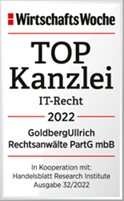The General Court confirms that the German stuffed animal manufacturer Steiff cannot have the affixing of a button or a flag by means of a button to the ear of a stuffed animal protected as a Community trade mark. This affixation lacks distinctive character, as it does not in itself allow the average European consumer to identify the commercial origin of the stuffed animal.
In 2010, the German soft toy manufacturer Steiff applied to the Community Trade Mark Office (OHIM) for "position marks" as Community trade marks.
Steiff thus claimed protection at the level of the European Union - in the sense of an exclusive right - for a shiny or matt, round metal button placed in the middle area of the ear of any stuffed animal which has ears, and for a rectangular, elongated fabric flag attached by means of such a button. Protection is not sought for the figurative representations in the mark as such, nor for the button or the flag attached by means of a button as such, but solely for the attachment of the button and the flag by means of such a button in the middle area of the ear of stuffed animals.
OHIM rejected Steiff's applications because the marks applied for lacked distinctive character. They did not allow consumers to recognise the commercial origin of the goods, i.e. that it was a Steiff soft toy and not a soft toy from another manufacturer.
Steiff challenged those decisions of OHIM before the General Court, claiming that OHIM had wrongly denied the marks applied for distinctive character. In today's judgments, the General Court dismisses Steiff's claims. According to the Court of First Instance, the marks applied for do not possess the minimum degree of distinctiveness required for registration as Community trade marks. The General Court first finds that the marks applied for merge with a possible appearance of the soft toys. As 'positional marks', they necessarily merge with the appearance of the stuffed animals, since they would not exist without the fixed connection of the button and the www.curia.europa.eu flag with the precise location. Moreover, buttons and small tags are common design elements for stuffed animals.
Since consumers do not usually infer the commercial origin of goods from signs which blend in with their appearance, the marks applied for would therefore have to depart significantly from the norm or custom of the sector.
However, this is not the case. First, buttons and flags are common design elements for soft toys and, second, consumers are accustomed to a very wide variety of those goods, their designs and their possible configurations. Their attachment to the ear, which in fact creates a common combination which will be perceived by consumers as a decorative or even (in relation to the mark applied for, which includes the flag) functional element, cannot be regarded as unusual. That design will be perceived by consumers merely as a variant of the possible application of the button or the flag and the button to other parts of such goods or also as a variant of any other ornamentation applied to the ears.
Therefore, the consumer cannot see any indication of the farm origin in it.
For the above reasons, it is also irrelevant that Steiff may be the only manufacturer to attach shiny or matt, round metal buttons to the ears of stuffed animals or to attach a rectangular, elongated fabric flag to the middle area of the ear of stuffed animals by means of such a button.
Gericht der Europäischen Union, Urteil vom 16. Januar 2014 — T-433/12, http://dejure.org/dienste/vernetzung/rechtsprechung?Text=T-433/12> und T-434/12, <http://dejure.org/dienste/vernetzung/rechtsprechung?Text=T-434/12>, Margarete Steiff GmbH / HABM
Source: Press release of the European Court of Justice
Goldberg Attorneys at Law 2014
Attorney at Law Michael Ullrich, LL.M. (Information Law)
Specialist lawyer for information technology law
E-mail: info@goldberg.de


